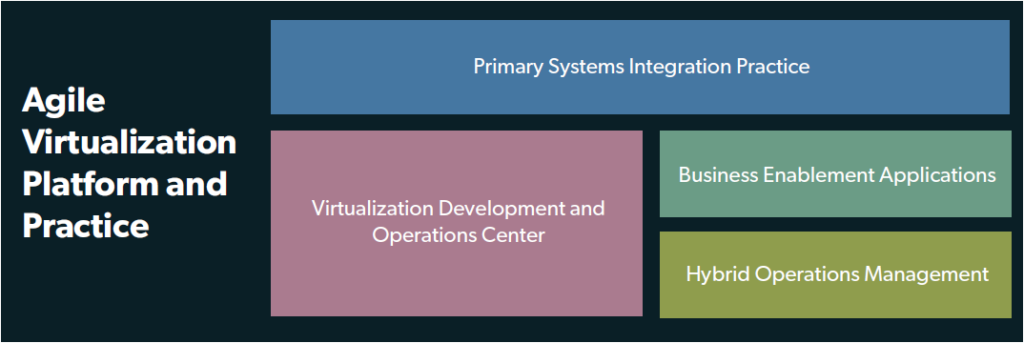NEC Agile Virtualization Platform and Practice (AVP)
Transformation of Digital service provider through Platforms, tools and process.
Personal and digital services to be available anywhere at any time is the prime demand from the customers. A trend that is radically changing the way companies operate. The Dimension to meet customer requirements, as well as provide innovative services to the market faster and reduce overhead is directly equivalent to the transformation of each digital service provider.

Highlights of AVP (Agile Virtualization Platform and Practice)
NEC/Netcracker’s AVP has made the transition simple for service providers to virtual networks and, finally, changes to digital service providers by supporting greater interdepartmental collaboration, allowing the use of digital front-end applications and streamlining end-to-end service management.
It consists of four basic elements:


Primary systems integration
The Primary Systems Integration Practice (PSIP) has succeeded in dealing with the commercial, operational and regulatory challenges that prevent them from taking advantage of virtualization technologies in multivendor and the best ecosystems. NEC/Netcracker’s services take all stages of virtualization initiatives into core consideration to cover it from all aspects. From the initial definition of the program and its commercial status to the total transfer of operations. Utilizing years of experience in Agile deployments and software-based services, PSIP helps service providers convert proprietary-based environments, which are the exclusive property of vital software-driven ecosystems.
Virtualization Development and Operations Center
The Virtualization Development and Operations Center (VDOC)is the first agile collaboration environment designed to automate end-to-end service lifecycle management. It allows collaboration between departments and with third-party partners, including solution vendors or systems integrators. VDOC simplifies and accelerates the integration, testing and implementation of the service by taking advantage of a library that will always extend the components of the reusable service.
Business Enablement Applications
Business Enablement Applications (BEA) are designed to boost the commercialization of new digital services that use virtual networks and software-define networks. BEA Office fills current gaps with existing BSS by providing applications that support on-demand services, managing profitable partners and transforming emerging business models into cash. Delivered through an architecture based on micro-services, which provides a plug-and-play approach to expand existing BSS functions against the current options of costly upgrades or large-scale transformations.
Hybrid Operations Management (HOM)
HOM focuses on making traditional and virtual networks work at the same time on a large scale. Hybrid Operations Management benefits from years of proven experience in end-to-end management and MANO, and eliminates the gaps that are missing in current solutions to automate the management of hybrid networks, including to ensure continuous improvement and security. HOM integrates with VDOC to develop a dynamic and continuous follow-up loop between products and development environments.
Advantages
Reduce the risk
- Take advantage of NEC and Netcracker’s deep industry experience in all stages of virtualization implementation.
- Develop an environment and a collaborative program to support the development of SDN/NFV applications and technologies.
- Avoid blocking the vendor and partner with the provider you choose while reducing the cost of complexity.
- Use the DevOps and Agile methodologies to incorporate best practices gradually or make quick changes when necessary.
- Provide a broad set of tools and practices to test new services and validate them.
Income Generation
- Build new business lines based on virtualization services.
- Integrate a wide range of partners before integrated applications and VNFs in the partnership program.
- Reduce time to market with business-enabling applications and integration adapters based on microservices.
- It allows the automation of end-to-end lifecycle management service with a wide range of partners that you decide are the best for your business.
- It supports digital channels through the market that allow the self-service capabilities of its customers throughout the client’s journey.

